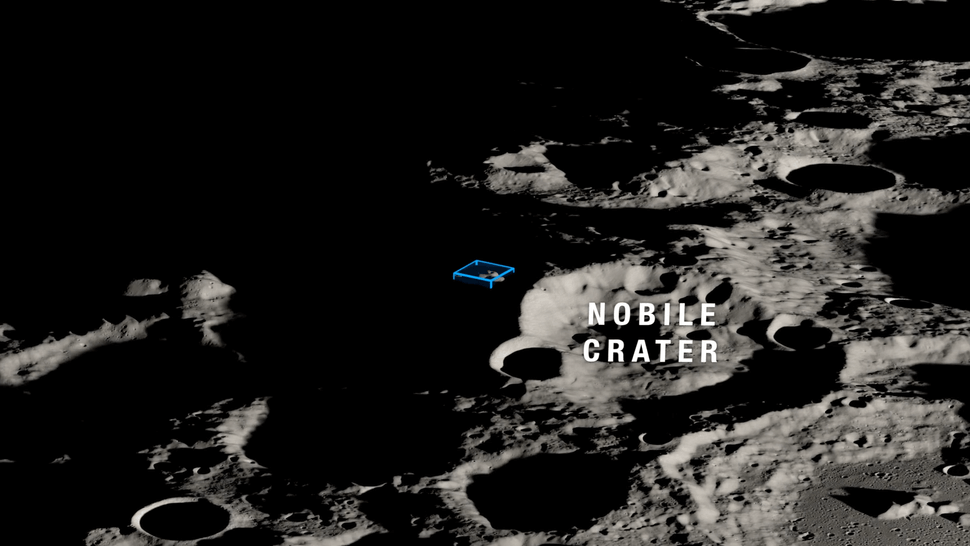Despite the failure of the first U.S. commercial lunar lander to ever operate in space, Astrobotic Technology is pressing forward on its next moon mission, still on the calendar for launch before year’s end.
The build-up of hardware for the Astrobotic Griffin Mission One lander is now on view at the Pittsburgh-based private firm can be watched from the adjoining Moonshot Museum. The upcoming moon lander, known as Griffin is the largest lunar lander since the Apollo lunar module.
There’s no doubt about it: Griffin’s upcoming flight is not just a big one for NASA’s Commercial Lunar Payload Services (CLPS) initiative in which American companies are contracted to deliver science and technology to the lunar surface; it also signals an important bridge to NASA’s Artemis Program of human exploration on the moon.
Lunar machinery
The Griffin spacecraft will be launched atop a SpaceX Falcon Heavy rocket and will carry a first-of-its kind Artemis lunar rover, the Volatiles Investigating Polar Exploration Rover, or VIPER.
VIPER is targeted to land near the moon’s south pole, wheeling about on a 100-day mission at Mons Mouton, a flat-topped mountain adjacent to the western rim of the Nobile Crater.
The robotic rover is viewed by NASA as an important tool to glean critical information about the origin and distribution of water ice on the moon. Doing so, VIPER can help gauge the clarity of vision about harvesting lunar resources to sustain human exploration on Earth’s celestial neighbor.

Rough, rocky road
But the pathway to the moon for Astrobotic has been a rough, rocky road. The loss of the approximately $100 million Peregrine Mission One lunar lander mission was fraught with highs and lows, said Astrobotic CEO John Thornton.
“These missions are very difficult to start with,” Thornton told Space.com. “We’re doing it at a fraction of what it normally costs to get these missions done. The challenge is to fly these at the budget we’re attempting to do here. And if we’re successful at that, that means you can fly again, again and again.”
The company’s Peregrine lunar lander ran into trouble shortly after liftoff on Jan. 8, when it was sent moonward by the maiden takeoff of the United Launch Alliance’s next generation Vulcan Centaur rocket.
Riding atop the inaugural flight of that Vulcan booster was a nail-bitter, but they nailed it, Thornton said. However, within hours Peregrine was in trouble.
Peregrine pitfalls
Shortly after launch, Peregrine suffered a propulsion issue, short-circuiting its multi-engine burn voyage before attaining a four-legged soft-landing at the Gruithuisen Domes region of the moon.
“It failed in the beginning and then we got 10 days of operations after that. So we got a ton of data to hone in on specifically what happened. There’s still uncertainty of what that failure was,” Thornton said, be it a material failure, foreign object debris in a valve, perhaps a design issue. “There’s some parts of that you can never know,” he said.
Flight control teams gathered loads of data and feedback about other spacecraft systems, particularly those custom-built by Astrobotic. “So luckily, we just didn’t lose communication. That would have been a worst-case scenario from de-bugging the situation.”
Thornton said a failure review board is now looking into the Peregrine pitfalls, “to make spacecraft better in the future.”
In the final days of the trouble-plagued mission, a decision was made to direct Peregrine Mission One to make a destructive, controlled re-entry into South Pacific ocean waters on Jan. 18. Peregrine carried a total of 20 payloads from seven nations and 16 commercial customers.
Serious progress
Despite the loss of Peregrine, Thornton remains bullish about the NASA CLPS model of doing lunar business.
“I think it’s achievable and I believe we’re on the precipice of that as an industry,” said Thornton. “We’re making serious progress.”
Given the Feb. 22 Intuitive Machines soft landing on the moon of its Odysseus spacecraft at the south pole region of the moon, what’s Thornton’s take?
“Of course it’s challenging to have a competitor get way closer to full success than we did,” Thornton responded.
“From an industry standpoint, it’s a big one. It says that the model will likely work if given a little bit more time,” Thornton added. “To me that is the biggest win we can get … if industry is successful then, ultimately, Astrobotic will be successful too.”
Astrobotic offered a final update for the Peregrine Mission One on the company’s website:
“Peregrine has flown so Griffin may land. Ad luna per aspera,” the communiqué concludes in a nod to a Star Trek motto, “To the stars through difficulty.”